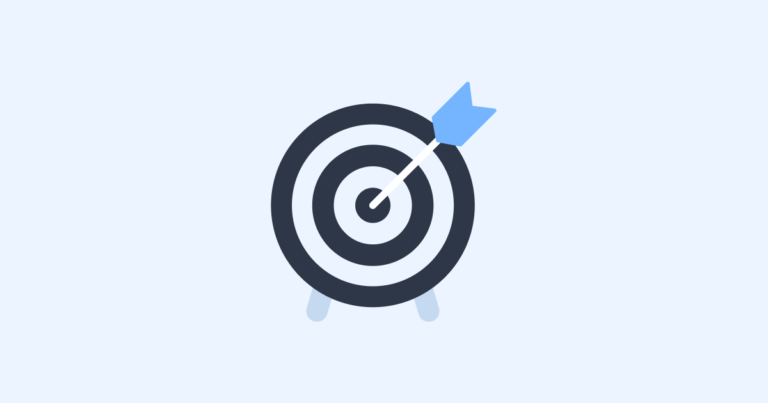Find valuable users quickly through Facebook Ads by using interest-based audience tests.
Why it’s a good idea
Facebook has such a wide variety of users that it can be beneficial to point them in the right direction.
The goal isn’t to laser target only a select group of people and “best” the algorithm. Instead, we work to gently nudge the algorithm in the right direction and help it find valuable audiences faster. Sometimes we do this by offering up competitors, but other times we’ll rely on binary interests to split the pool of potential users.
This strategy works twofold:
- For new accounts without seasoned pixel data, it can help drive faster results and give your pixel the initial data to build lookalike audiences from
- For existing accounts, it can open up new audiences and expand the conversion footprint (and unlock new angles, offers, or products)
🌟 This Guide is Part of a Series of Marketing Patterns
For more free and ready to use marketing strategies just like this one, view the full marketing patterns library.
Strategy Analysis
Finding Targetable Interests
The first step is to find interests that contain your prospective customers.
First of all, the brands or products need to have a Facebook page. It doesn’t need to be actively used, but it needs to have some followers (higher is better). There isn’t a clear rule to apply to understand which interests are going to targetable. It seems very arbitrary: some brands are targetable with as few as 50,000 fans, others with several hundred thousand aren’t.
The easiest way to find interest targets is to use the Audience Insights tool. Search for your brand (if you show up) or larger competitors. Scroll down the list and find other pages the audience likes.
Open each in a new tab, and run them all through the audience insights tool. If they pull up results, that means they’re targetable.
Save the audience. For a naming convention, I use [INT] (name of audience) to make them easy to find in the audience manager.
A word on reliability
Facebook doesn’t always get it right. This won’t come as a surprise if you’ve ever taken a look at the interests that Facebook has tagged you with. Sometimes they seem completely random.
As with most things FB Ads: when in doubt, go wider. Sometimes all you need to do is steer the algorithm in a general direction. The most simple example of this is gender, but there are many other ways we can bucket our users.
An important distinction: We’re not trying to laser target “only” our exact customers, but instead trying to nudge the algorithm in the right direction by carving off large swaths of users we know are not our audience.
Some examples that can act as entry points into specific audiences:
- Do they shop for groceries at Whole Foods or Walmart? (Target retailers)
- Which car brands might they drive? (Target models or manufacturers)
- Are they politically liberal or conservative? (Target anchors or radio hosts)
- Do they live in cities or rural areas?
- Do they play video games?
Think about the binary choices that your customers make and help rule out the other 50% that isn’t them.
Building The Campaigns
Many targetable interests that contain your users will have a lot of overlap. If your interests are large enough, you can use the audience overlap tool to run an analysis.
You need to turn off automatic audience expansion, or else Facebook will find you users who are not part of the interest audience you’re after.
Next, you’ll need to exclude all other potential audiences your users might be a part of. Otherwise, you run the risk of showing ads to the same group of users multiple times (one for each interest they are a part of).
As an example, here is a collection of interests we’re going to target:
- Toms Shoes
- Reebok
- Nike
- Adidas
They’re all shoe retailers and probably have a wide variety of overlap. In this case, the “reebok” audience would look like this:
- Interests: Reebok
- Exclusions: Toms, Nike, Adidas
This allows us to run against an audience of just reebok people.
Additionally, since these are prospecting campaigns, you’ll exclude a few custom audiences, too. We don’t want to run ads against people who have already been acquainted with our brand (and if we do not exclude them, the FB algorithm will prioritize them due to previous engagement).
Here is my typical custom audience exclusion list:
- WCA 30 (all visits, past 30 days)
- Engagers (past 30 days)
- Purchasers (past 180 days)
Creatives
Use your most proven, high-performance creatives. There are already too many variables at play that can skew results — at least lead out with proven creative. Each ad set gets 2-3 creatives, automatic placements.
Campaign Structure
You can do this in a number of ways:
- CBO: 1 Ad set, 1 interest, 2-3 creatives
- CBO: 5 ad sets (5 interests), 2-3 creatives each
- ABO: 1 ad set for each interest, 2-3 creatives each
My preference is to use the first option to ensure delivery. Lumping all of the ad sets into the same CBO will throttle delivery according to Facebook’s internal optimizations.
In theory, an ABO would work fine, but I suspect that CBO campaigns get preferential treatment within the algorithm.
Budget Considerations
Small budgets ($10/day per campaign) are recommended; otherwise, you’ll burn out the smaller audiences with high frequency.
Target 2x average CPA before killing campaign unless upstream metrics are terrible: unique link clicks, add to cart, initiate checkout, as compared to other campaigns.

